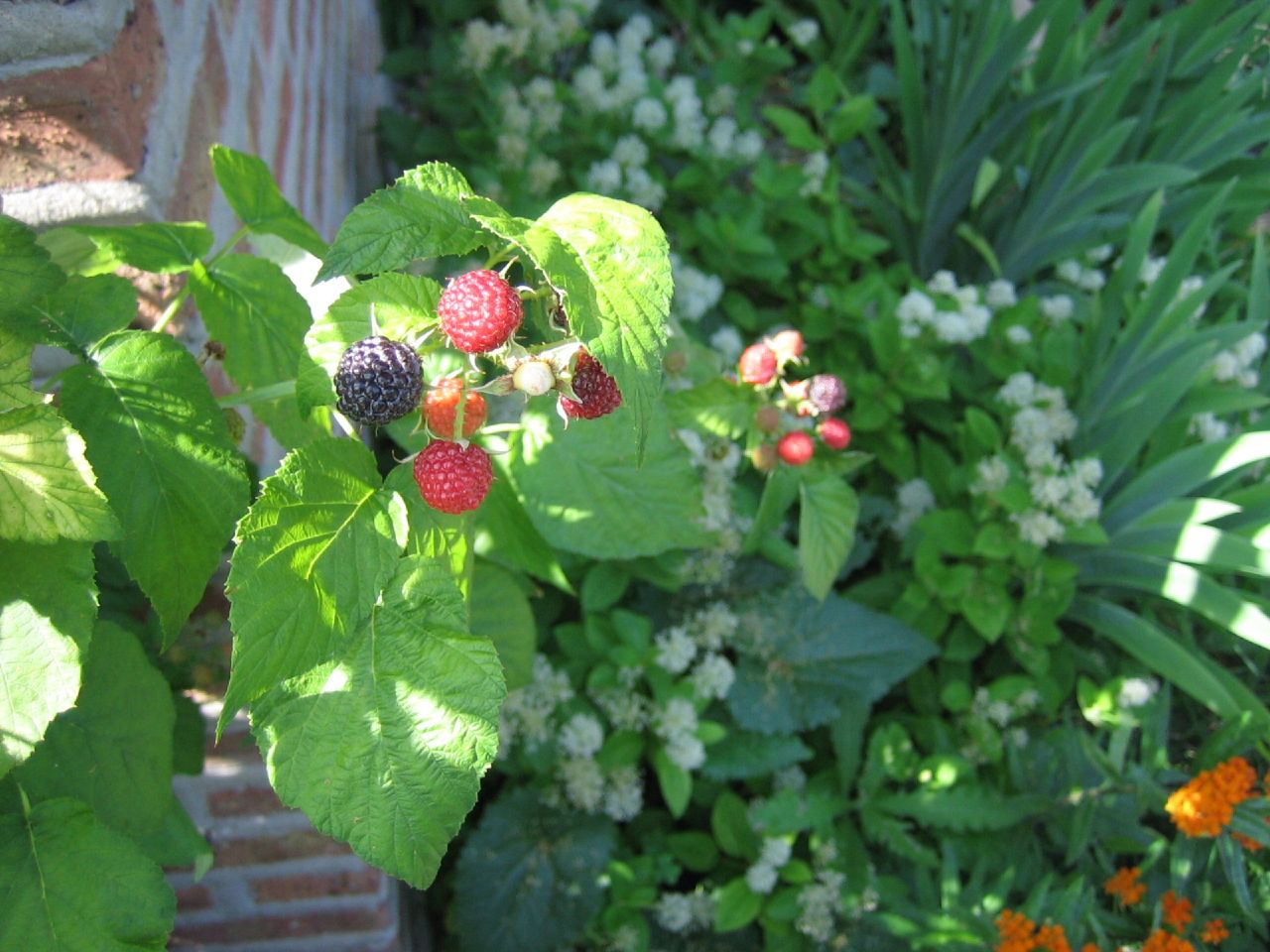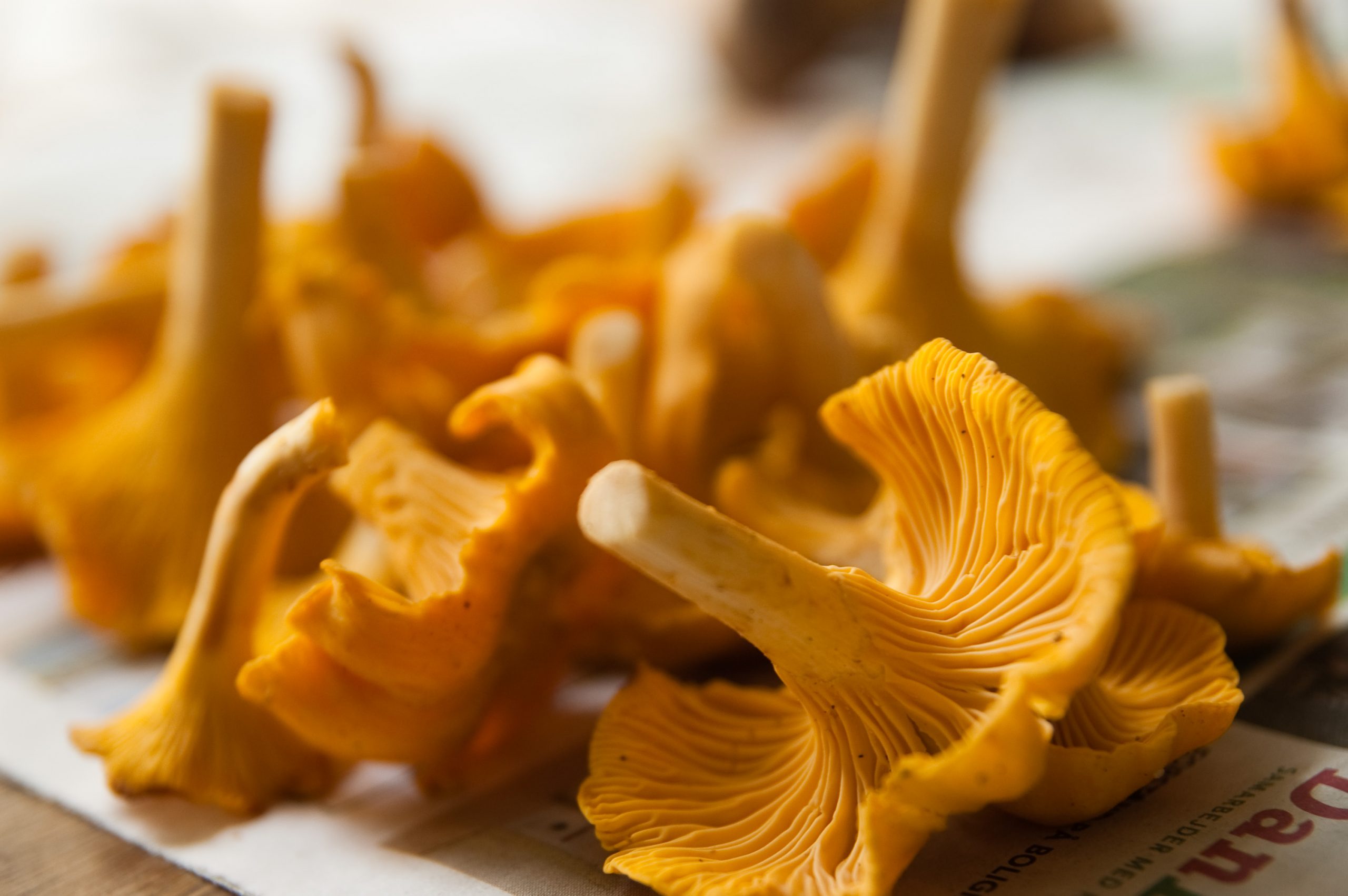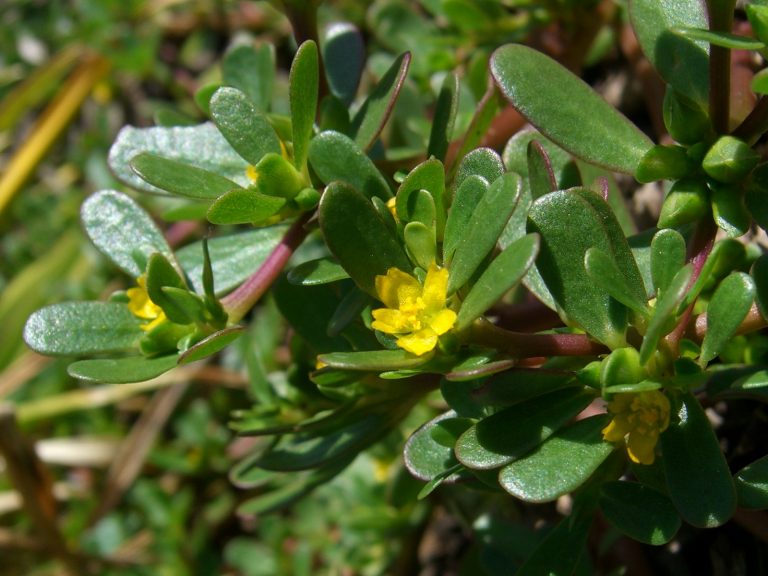Eating seasonally is one of the most efficient ways to maintain health, harmony, and vitality. Shopping your local farmer’s markets, belonging to a CSA, and growing your own produce are all great ways to ensure that you are eating fresh and local, but they can be expensive, or even infeasible. When you know what to look for, and where to look, you can enhance your diet remarkably at no cost whatsoever, other than the enjoyable time spent foraging, as the world abounds with wild edibles.
For the summer season, let us take purslane, as a fine example. This common “weed” is both highly nutritious, and widely available. A member of the Portulacaceae (Portulaca) family, this low growing succulent grows in a wide range of environments across the globe. It pops up regularly in garden beds, but it is not so fussy as to shun driveways or or roadsides, either.
This leafy green is packed with nutrition, boasting high quantities of vitamins A and C, in addition to a smaller sampling of B vitamins. It also provides significant amounts of a range of minerals, including magnesium, manganese, potassium, iron, and calcium. Most notably, however, is the presence of omega-3 fatty acids, essential fats that the body cannot produce itself. Of these fatty acids, ALA is commonly found in other plants, but purslane outshines them all in terms of quantity. EPA, the other omega-3 fatty acid found in trace amounts in purslane, is not normally found in terrestrial plants at all, as it is normally sourced from fish and algae.
The flavorful leaves and tender stems can be eaten raw or cooked. Its lemony flavor adds zest to summer salads, and the mucilaginous quality of the leaves can be used to thicken soups. Fattoush, a traditional Lebanese salad, blends the flavors and textures of purslane, cucumber, tomato and parsley into a refreshing dish served with pita for a light summer meal.
Other members of the Portulaca family may be more familiar as the flowering annuals Portulaca and Moss Rose. It should be noted that Moss Rose is not edible, as it contains soluble calcium oxalates, which are toxic and, when eaten in large quantities, may lead to kidney failure. This plant is easily distinguished, however, as its leaves are thin and elongated, like bloated needles, rather than rounded and flat.
Brambleberries
Success
You are now signed up for our newsletter
Success
Check your email to complete sign up
Next, let us skip to something sweet. There are a number of berries that fall under the genus Rubus, a broad genus, mainly consisting of prickly flowering shrubs, in the rose (Rosaceae) family. The fruits are aggregate clusters of individual “druplets,” which each contain a seed. There are brambles growing wild almost everywhere in the world, and when taken outside their native habitat, they can become invasive.
Blackberries (Rubus fruticosus,) growing on long upright canes, are probably the most commonly known bramble, with the words even being used interchangeably in the UK. Dewberries (Rubus trivialis,) grow throughout North America and northern Europe. While they are often mistaken for blackberries, their cousins, these brambles grow on a more trailing vine.

Red raspberries (Rubus idaeus) and black raspberries (Rubus leucodermis) are native to North America and much of Europe. Yellow raspberries, a natural mutant of the red raspberry, grow in the same areas, but are much less common. Cloudberries, native to the arctic and subarctic regions of the northern temperate zone, are popular in Scandinavia.
Wineberries (Rubus phoenicolasius), are native to eastern Asia. Once introduced as breeding stock for raspberries, they became invasive in much of the eastern United States and northern Europe.
Aside from being incredibly delicious, brambles offer many health benefits. Fiber, antioxidants, vitamin C, and heart-healthy pectin all make these berries a wise choice for a healthy diet, with blackberries even being valued medicinally as a remedy for fevers, colds, coughs and flu.
Brambles abound in summer. If you live even a bit outside of the city, you should find volunteer raspberries, blackberries, and wineberries popping up alongside the road, sunny areas in parks, and along the edge of wooded areas.
If you don’t want unasked-for protein, be sure to check the underside of the berries, where fruit fly larvae may be hiding. If the druplets appear watery, a closer look is likely to reveal a miniature maggot squirming inside. Discard those berries unless you wish to eat them right away, or you will be bringing fruit flies home with you.

Chanterelle mushrooms
Although foraging wild mushrooms can be risky, chanterelles are one of the easiest to identify. Brilliant in color, with a potent fruity scent, they are hard to mistake. On average, chanterelles will grow to 3 or 4 inches tall, but they can get to be much larger. The gills on these mushrooms are unusual in that they cross in a forked pattern, and extend part-way down the stem. You may find them growing in patches, or stand-alone.
There are two Chanterelle look-alikes to beware of. Jack-o’-lantern mushrooms are similar in shape and color, but they always grow in clusters, with the stems connected at the base. They lack the flavorful aroma, and their gills are not forked. Although they will not kill you, they can make you quite sick. False chanterelles, too, are very similar to the prized edible, but they have subtle color differences and a bitter flavor.
Chanterelles are slow growers, and require hot weather and plenty of rain. When foraging, it is good practice to leave some mushrooms to mature and reproduce. That way you will likely have a reliable source for many years. Whether you harvest with a knife or pull them out of the ground, the underground mycelium will continue to work in a symbiotic relationship with the surrounding tree roots, and continue to produce when conditions are favorable.
Like most mushrooms, Chanterelles are mostly water, but they are also high in iron and copper, and provide significant amounts of vitamins B2, B3, B5, D2 and D3. Rich in phytochemicals and antioxidants, they can protect against aging, as well.
While purslane and brambleberries are much more frequently stumbled upon, if you are lucky enough to find chanterelles, you will not regret the effort. And considering that the effort is a pleasant walk in the woods, you are not likely to regret it anyway.
Click here for Part I of this series: Diet Doldrums? Take a Walk on the Wild Side
















